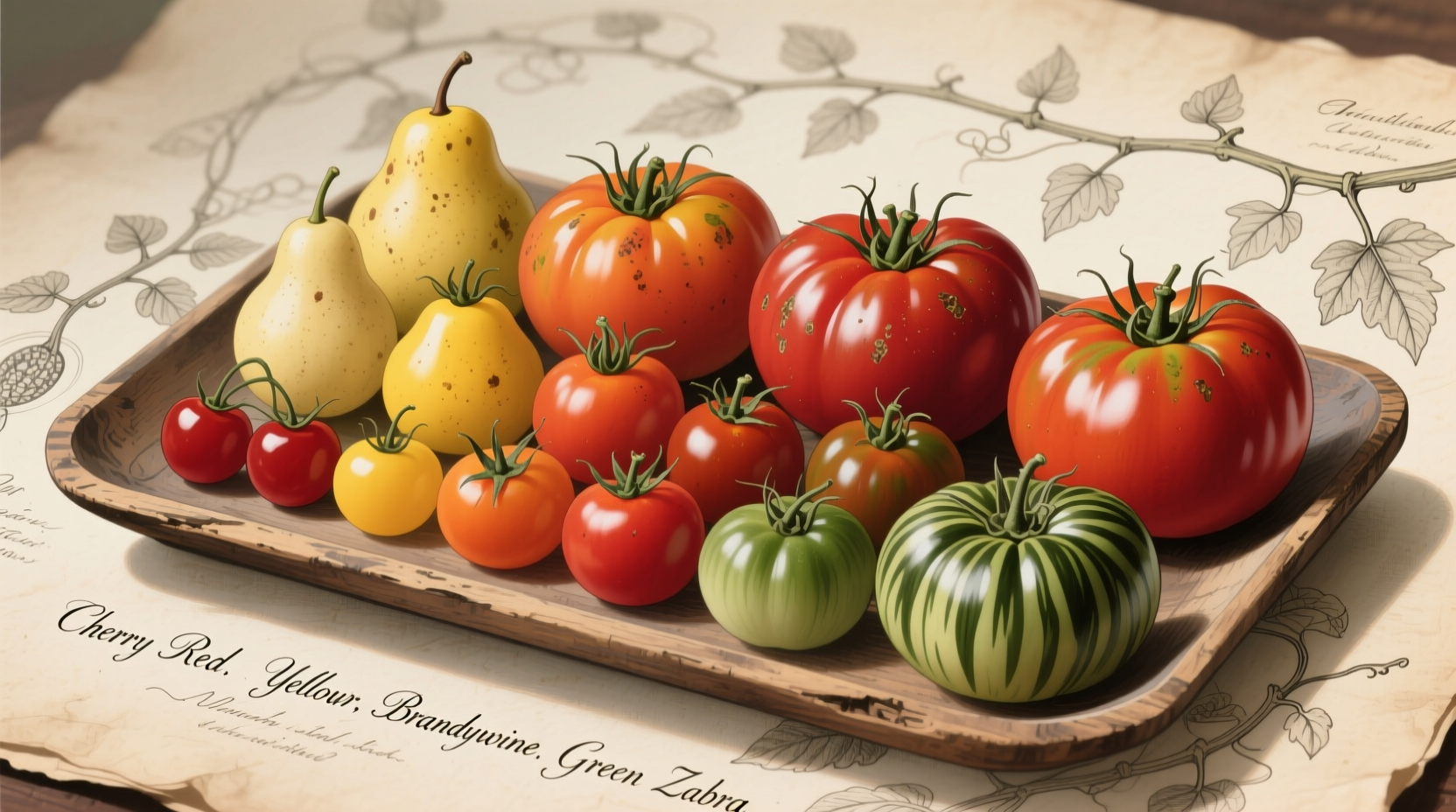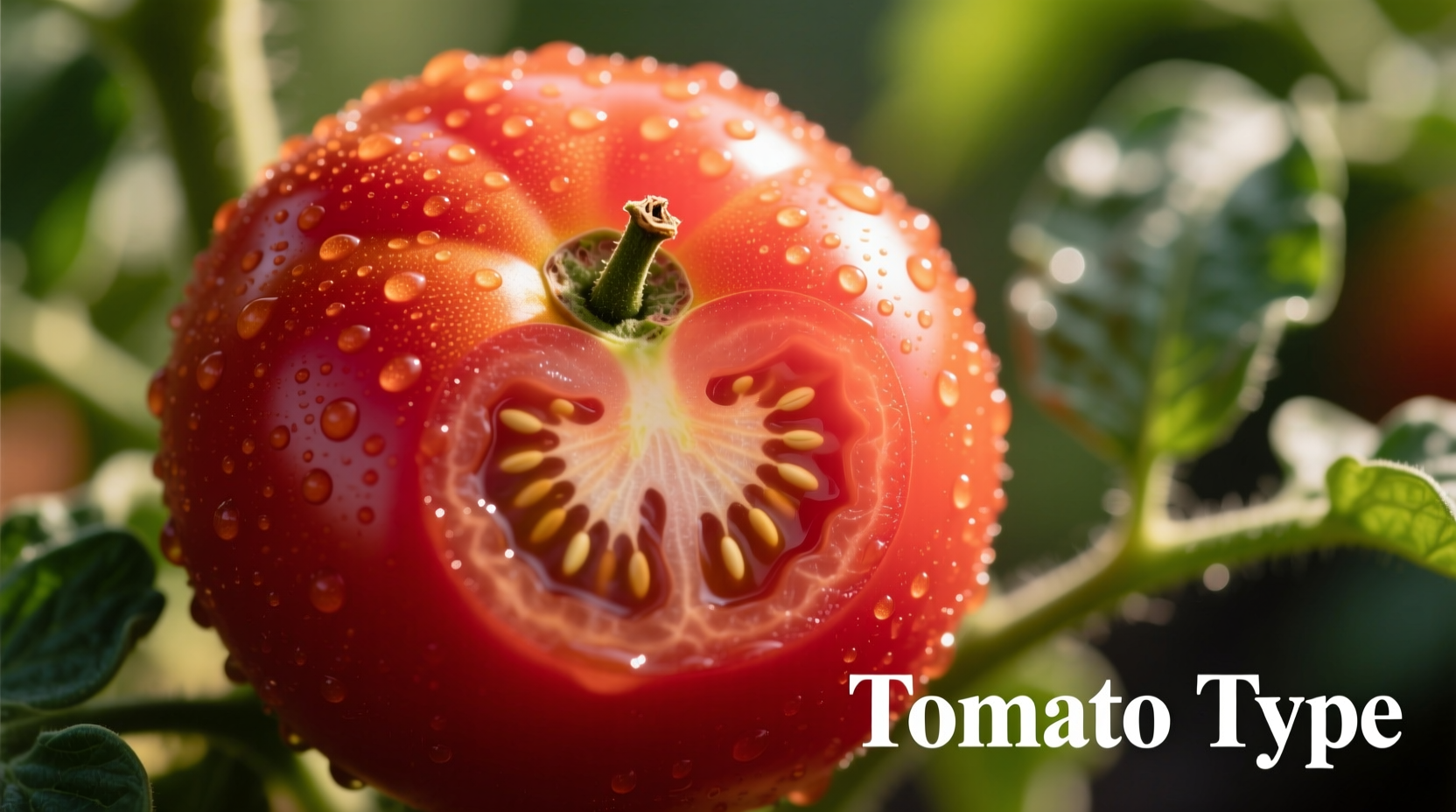Discover exactly which tomato varieties deliver the best flavor for your favorite dishes and how to select the perfect type for your garden or grocery shopping. Whether you're a home cook seeking superior sauce tomatoes or a gardener wanting reliable harvests, understanding tomato classification transforms your culinary results.
Understanding Tomato Classification Systems
Tomatoes are categorized using multiple classification systems that serve different purposes. Botanically, all cultivated tomatoes belong to the species Solanum lycopersicum, but culinary and agricultural classifications matter more for everyday use.
The most practical classification divides tomatoes into growth habits and fruit characteristics. Determinate varieties grow to a fixed height and produce one main harvest, making them ideal for container gardening and canning operations. Indeterminate varieties continue growing and producing fruit throughout the season, preferred by home gardeners seeking continuous harvests.

Five Main Tomato Types Compared
| Type | Best For | Flavor Profile | Texture | Season Length |
|---|---|---|---|---|
| Slicing | Burgers, sandwiches, fresh salads | Balanced sweet-tart | Firm with juicy interior | 70-85 days |
| Roma/Plum | Sauces, canning, paste | Concentrated, less watery | Dense with fewer seeds | 70-75 days |
| Cherry/Grape | Snacking, salads, roasting | Intensely sweet | Explosively juicy | 55-70 days |
| Heirloom | Specialty dishes, fresh eating | Complex, variable | Soft, sometimes irregular | 75-90 days |
| Specialty | Niche culinary applications | Unique characteristics | Varies significantly | Varies |
Choosing the Right Tomato for Your Purpose
Your intended use should drive your tomato selection. For fresh applications like Caprese salad or BLTs, slicing tomatoes like Beefsteak or Early Girl provide the perfect balance of firmness and juiciness. These varieties typically have higher water content (94-95%) which delivers that satisfying burst of flavor when bitten.
When making sauces or pastes, roma tomatoes like San Marzano or Amish Paste excel due to their lower moisture content (about 88-90%) and higher solid percentage. According to USDA agricultural research, roma varieties contain approximately 25% more pectin than slicing tomatoes, creating naturally thicker sauces without requiring excessive reduction time.
Gardeners in cooler climates should prioritize early-maturing varieties like Stupice or Oregon Spring, which can produce ripe fruit in as few as 54 days. These cold-tolerant types have been specifically bred for northern regions where summer heat is less intense.
Tomato Cultivation Timeline and Evolution
The journey of tomatoes from wild plants to culinary staples spans centuries. Originally native to western South America, tomatoes were first domesticated by indigenous peoples in Mesoamerica around 500 BC. Spanish explorers introduced them to Europe in the 16th century, where they were initially grown as ornamental plants due to suspicions about their nightshade family relation.
The 19th century saw the development of the first commercially viable varieties, with the introduction of the 'Acme' tomato in 1890 marking the beginning of modern tomato breeding. The 1940s brought hybrid varieties that improved disease resistance, while the 1970s saw the heirloom tomato revival movement that preserved hundreds of traditional varieties from extinction.
Regional Adaptation and Climate Considerations
Tomato performance varies dramatically by climate. In humid southeastern United States, varieties with fusarium and verticillium wilt resistance like 'Celebrity' or 'Mountain Merit' perform best. Arid southwestern regions favor heat-tolerant varieties such as 'Solar Fire' that continue setting fruit when temperatures exceed 90°F.
Short-season gardeners in northern climates should select varieties maturing in 60-65 days, while those in extended growing seasons can experiment with late-maturing heirlooms like 'Brandywine' that require 80+ days. The University of California Cooperative Extension notes that tomatoes generally require 1,000-1,500 growing degree days to reach maturity, making variety selection critical for success.
Practical Selection Guide for Home Cooks
When selecting tomatoes at the market, look for these indicators of quality by type:
- Slicing tomatoes: Should feel heavy for their size with taut, smooth skin and no soft spots
- Roma tomatoes: Look for uniform brick-red color and firm, egg-shaped fruit
- Cherry tomatoes: Choose plump specimens still attached to green stems
- Heirloom tomatoes: Expect irregular shapes and variations in color - this indicates authenticity
Store tomatoes at room temperature away from direct sunlight until fully ripe, then refrigerate only if necessary to extend shelf life by a few days. Never store unripe tomatoes in the refrigerator, as temperatures below 55°F halt the ripening process and degrade flavor compounds.
Common Tomato Selection Mistakes to Avoid
Many home cooks make these common errors when selecting tomatoes:
- Choosing uniformly red tomatoes year-round (industrial varieties bred for shipping often sacrifice flavor)
- Refrigerating unripe tomatoes (destroys volatile flavor compounds)
- Assuming larger is better (smaller varieties often have more concentrated flavor)
- Ignoring seasonal availability (peak tomato season varies by region but generally runs June-September in North America)
According to Cornell University's vegetable extension program, vine-ripened tomatoes develop 30-50% more flavor compounds than those picked green and ripened off-vine. When possible, select tomatoes that show evidence of vine ripening through deeper coloration and characteristic varietal patterns.
Frequently Asked Questions
What's the difference between determinate and indeterminate tomatoes?
Determinate tomatoes grow to a fixed height (usually 3-4 feet) and produce one main harvest before dying. They're ideal for container gardening and canning. Indeterminate varieties continue growing throughout the season, producing fruit continuously until frost. They require staking or caging and are preferred by gardeners wanting fresh tomatoes all season.
Which tomato varieties make the best sauce?
Roma and plum varieties like San Marzano, Amish Paste, and SuperSauce produce the best tomato sauces due to their lower water content (88-90% vs 94-95% in slicing tomatoes), higher solid percentage, and naturally thicker consistency. These varieties require less reduction time and develop richer flavor when cooked.
How can I identify heirloom tomatoes versus hybrids?
Heirloom tomatoes typically have irregular shapes, unique color patterns, and sometimes "ugly" appearances compared to uniform commercial hybrids. They often have distinctive names referencing places or people (Brandywine, Cherokee Purple). Most importantly, heirlooms breed true from seed, while hybrids produce unpredictable offspring. Heirlooms generally have more complex flavor profiles but less disease resistance than modern hybrids.
Why do some tomatoes taste better than others?
Tomato flavor depends on multiple factors including variety genetics, growing conditions, ripeness at harvest, and storage methods. Research from the University of Florida shows that sugar content (measured in Brix), acidity levels, and volatile aroma compounds all contribute to perceived flavor. Vine-ripened tomatoes develop more flavor compounds than those picked green. Soil composition, particularly potassium and calcium levels, also significantly impacts taste development.











 浙公网安备
33010002000092号
浙公网安备
33010002000092号 浙B2-20120091-4
浙B2-20120091-4